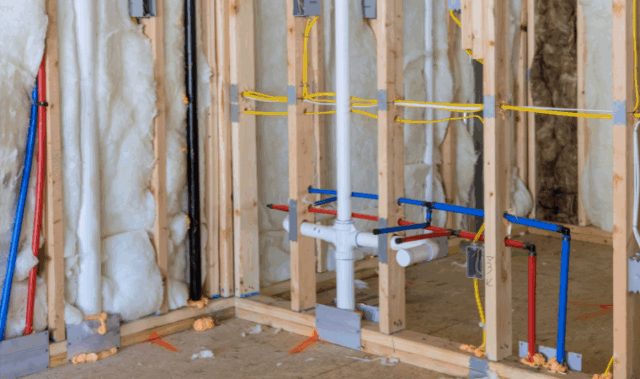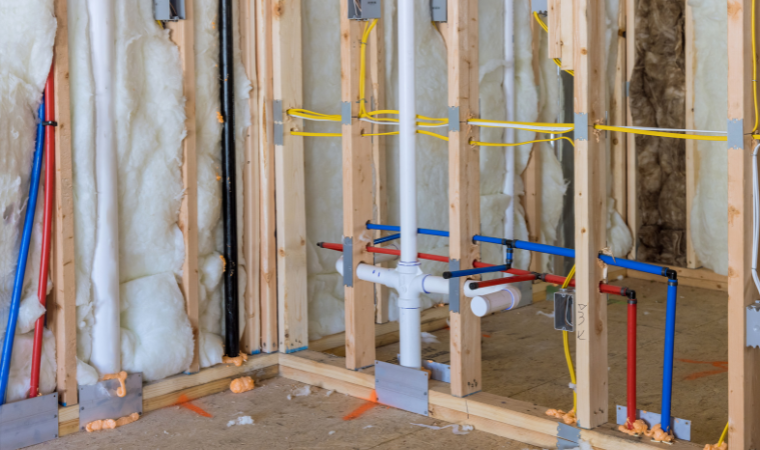When it comes to plumbing, two common concerns homeowners face are frozen pipes in winter and tree roots blocking sewer lines. If you’ve ever wondered does PEX pipe freeze or how to deal with roots in your sewer system, this guide will walk you through the essentials.
Does PEX Pipe Freeze?
PEX (cross-linked polyethylene) piping has become a popular choice in modern plumbing because it is flexible, durable, and resistant to corrosion. However, many homeowners ask: does PEX pipe freeze during cold weather?
The answer is that PEX is more resistant to freezing than traditional copper or PVC pipes, but it is not completely freeze-proof. Here’s why:
- Flexibility: PEX expands slightly when water inside it freezes, reducing the risk of bursting compared to rigid pipes.
- Insulation helps: PEX retains heat better than metal, but in extreme temperatures, water inside can still freeze.
- Location matters: Pipes in uninsulated basements, crawl spaces, or exterior walls are more vulnerable.
Homeowners can prevent the damage of PEX pipes during winter by insulating uncovered pipes, maintaining temperatures inside the house at a temperature above 55 degrees, and dripping a faucet in the rarely extreme temperatures. PEX has increased security but there is no plumbing system that is resistant to freezing conditions.
Why Tree Roots Invade Sewer Lines
Another frustrating plumbing issue is tree roots growing into sewer pipes. Roots naturally seek moisture, and small cracks or loose joints in pipes give them easy access. Over time, they expand inside the line, causing blockages, backups, and even pipe collapse.
Signs of root intrusion include:
- Frequent slow drains or clogs.
- Gurgling sounds from toilets or sinks.
- Sewage odors around the yard or basement.
- Recurring backups despite cleaning.
If left untreated, roots can cause costly sewer line damage and potential health hazards from sewage backups.

Tree Roots in Sewer Line Repair Options
When it comes to tree roots in sewer line repair, plumbers use several methods depending on the severity of the problem:
- Mechanical Augers: A root-cutting machine clears out blockages temporarily but doesn’t stop regrowth.
- Hydro Jetting: High-pressure water blasts roots and debris from the pipe interior.
- Chemical Treatments: Root-killing foams or solutions can slow future growth.
- Pipe Lining: A trenchless method that installs a new lining inside the old pipe, sealing cracks and keeping roots out.
- Pipe Replacement: In severe cases, sections of the sewer line may need to be excavated and replaced.
Choosing the right solution depends on pipe condition, budget, and the extent of root intrusion.
Preventing Future Plumbing Issues
For both frozen pipes and sewer root problems, prevention is key:
- Insulate PEX pipes in vulnerable areas.
- Seal cracks and ensure sewer pipes are watertight.
- Avoid planting trees with aggressive root systems near sewer lines.
- Schedule routine plumbing inspections to catch problems early.
By taking preventive measures, you can save money on costly repairs and keep your plumbing system in top condition year-round.

Final Thoughts
So, does PEX pipe freeze? Yea, but it is stronger than conventional. Freezing of pipes can be reduced with good insulation and maintenance. On the second hand, the roots of trees in sewer line repair must be taken seriously and solutions to them must be given in good time to avoid backups and permanent damages. Being proactive through maintenance checks and professional maintenance checks will make your plumbing system to operate in the coming years with ease.

